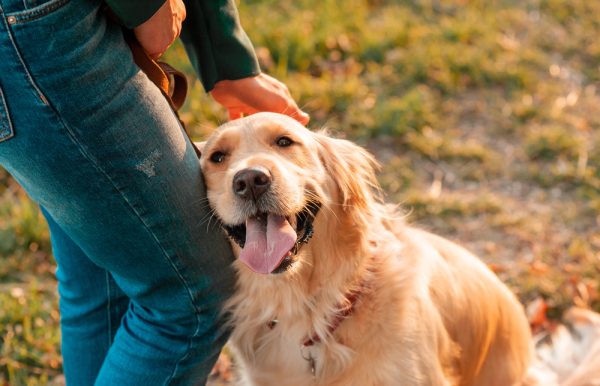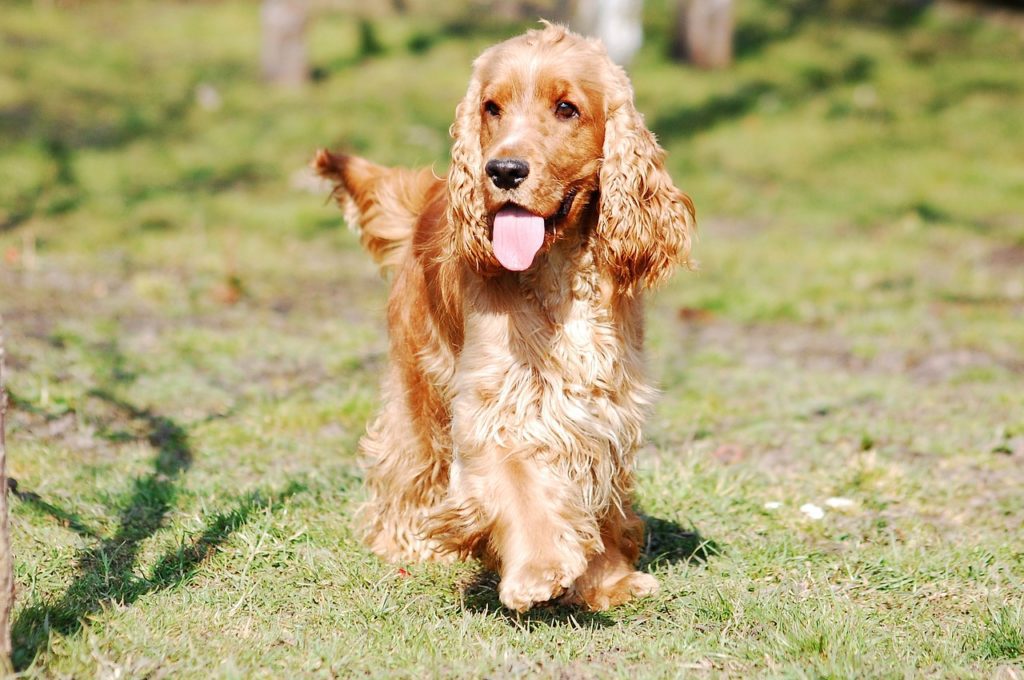When considering a Cocker Spaniel, it’s important to know the differences between working and show types. Show Cocker Spaniels are typically more calm and perfect for families who enjoy casual walks. In contrast, working strains are high-energy, similar to Springer Spaniels, and thrive in active homes.
Table of Contents
Toggle They’re also loving and great with kids. If you’re researching litters, you may encounter show/working litters or pure show litters, so thorough research will help you decide.
Working vs Show cocker spaniels
Working Cocker Spaniels are bred primarily for field work and hunting, being highly energetic and possessing strong hunting instincts. Show Cocker Spaniels, on the other hand, are bred to conform to Kennel Club standards with a focus on appearance and temperament suited for the show ring.
Both types share the breed’s characteristic friendliness and intelligence but differ in physique and energy levels.
Historical Background of Cocker Spaniels
The Cocker Spaniel breed has a rich history that traces back to its origins in England. Originally bred for their role in hunting, these dogs were particularly skilled at flushing out woodcocks, which is how they earned their name.
Over time, the breed evolved into both working and show types, but their hunting heritage remains a core part of their identity.
Key Differences:
Physical Characteristics
Show Cocker Spaniels like Maya are known for their blue roan coats and compact, balanced build. With a square muzzle, long ears, and a rounded skull, they possess a classic, sleek look that is enhanced by their thick, lush fur.
Maintaining this appearance requires regular grooming, and they are often sensitive to grooming mistakes. Their coat’s grooming sensitivity demands careful attention to keep their appearance polished and healthy.

In contrast, Working Cocker Spaniels such as Lucia have a more leggier build with less angulation. Their longer, narrower muzzle, higher-set ears, and flatter skull set them apart from the show type.
With their finer fur, working Cockers are easier to manage in terms of grooming, needing less frequent care. These dogs often have an undocked, full tail, and they serve as both loyal companions and skilled gun dogs due to their pedigree litter backgrounds.
Temperament and Energy Levels
Show Cocker Spaniels are often easier to manage, thanks to their calmer temperament. While they are still active, they require less mental and physical effort than their working counterparts.
Their less energetic nature makes them better suited to quieter environments, where they adapt well as family pets. Additionally, their frequent grooming needs mean they benefit from regular care, but their generally calmer disposition makes them easy to handle. Sometimes your dog might rub its face on you, you need not to worry, it is their token of affection.

On the other hand, Working Cocker Spaniels have much higher energy levels and are bred to work. Often compared to Springer Spaniels, working Cockers are described as “mad as a box of frogs” due to their relentless drive to be on the move.
These dogs are constantly on the go, using their keen sense of smell to follow scents. To keep them happy, they require a lot of effort, with plenty of stimulation in their home environment to channel their energy.
Exercise Needs
Both types of Cocker Spaniels require exercise, but working Cocker Spaniels need significantly more activity. A working Cocker Spaniel thrives in an active lifestyle, with demands for high mental and physical engagement.
Activities like running, agility training, and problem-solving tasks are crucial for their well-being.

In contrast, show Cocker Spaniels enjoy a more relaxed lifestyle but still benefit from regular walks and moderate physical engagement. They don’t require as much high-intensity exercise as working strains, making them easier to manage for less active households.
Grooming and Coat Maintenance
Show Cocker Spaniels have more intense grooming needs due to their thicker coats.
Their fur requires frequent grooming to maintain its sleek look and prevent tangles. Regular grooming sessions are necessary to ensure their coat stays in good condition. Over all cocker spaniels shed, they shed moderately.
Meanwhile, working Cocker Spaniels have finer fur, which makes them easier to groom. Their coat maintenance is less demanding, requiring less frequent attention compared to show Cockers, though regular care is still needed to keep them in good shape.
Training and Energy Management
For owners of Working Cockers, managing their robust energy is a vital part of daily life. These dogs need plenty of both physical stimulation and mental stimulation to stay content. Structured activities such as gundog training are ideal for these dogs, even if they are kept as non-working pets.

Without sufficient mental exercise and physical exercise, they can become restless and difficult to manage. It’s essential for prospective owners to be ready to meet these high demands through regular activities and training.
Behavioral Traits
Each type of Cocker Spaniel exhibits unique traits that prospective owners should consider. Show Cockers are generally more laid-back, making them great family pets with a calm demeanor.
On the other hand, Working Cockers have strong prey drives and require intensive training to help manage their natural instincts. Without proper guidance, their hunting instincts can become challenging, so owners must be prepared to invest time in managing these behaviors.
Health and Wellness
Maintenance Considerations
Show Cocker Spaniels often face challenges related to resource guarding, a behavior that can become a critical point for owners like Nonnie. This makes health testing and ethical breeding practices crucial when selecting a pup. Ensuring that the breeder follows these practices reduces the risk of inherited health issues, which can be a difficulty with non-health-tested dogs.
In general, show Cockers may be less demanding in terms of exercise and maintenance compared to their working counterparts, but regular health checks are important to maintain their well-being.

Working Cocker Spaniels, on the other hand, often need more attention in terms of exercise and mental stimulation. Owners like Sarah H with her Teddy-dog find that managing a high-energy working Cocker can be demanding, especially with a young family.
However, with adequate stimulation and regular exercise, these dogs thrive and are generally easier to maintain in terms of health. Their high energy levels mean they benefit from a more active lifestyle, which reduces the risk of health complications.
Well-being Considerations
Both working and show Cocker Spaniels can face breed-specific issues due to their physical build and activity levels. Common health concerns include ear infections, hip dysplasia, and progressive retinal atrophy. For working Cockers, their activity level often helps maintain their fitness, but it’s essential to monitor for joint problems due to their energetic nature.
Meanwhile, show Cockers may have more relaxed lifestyles, but keeping them active is important to prevent obesity and related health problems.

Nutritional Needs and Diet Management
The nutritional needs of working and show Cocker Spaniels differ based on their energy levels and health predispositions. Working Cocker Spaniels require a more tailored diet that supports their high activity levels, with plenty of protein and fats for sustained energy.
In contrast, show Cocker Spaniels, who lead a less demanding lifestyle, benefit from a diet that focuses on maintaining a healthy weight and preventing joint issues. Careful dietary management helps both types maintain their overall health and longevity.
Summary of key features:
Feature |
Show Cocker Spaniel |
Working Cocker Spaniel |
Physical Characteristics |
Compact build, square muzzle, blue roan coat, thicker fur, frequent grooming needed | Leggier build, narrower muzzle, finer fur, easier to groom, undocked tail |
Temperament and Energy Levels |
Calmer, less energy, suited to quieter environments, easier to manage | High energy, “mad as a box of frogs,” constant movement, needs stimulation |
Exercise Needs |
Moderate exercise required, regular walks sufficient for well-being | High mental and physical exercise needed, activities like running and agility |
Grooming and Coat Maintenance |
Thicker coat, intense grooming needs, prone to tangles | Finer fur, easier to maintain, less frequent grooming required |
Health Maintenance Considerations |
Less demanding overall, but health testing is important for inherited issues | Higher exercise demands, health checks needed, thrive with adequate stimulation |
Well-being Considerations |
Relaxed lifestyle, needs activity to prevent obesity, prone to ear infections and joint issues | High energy helps maintain fitness but monitor for joint problems |
Nutritional Needs and Diet Management |
Balanced diet to prevent obesity, focus on joint health | Diet rich in protein and fats to support high energy levels |
Real-Life Experiences from Cocker Spaniel Owners

Here are some real-life experiences on
- Blitz from Tallinn shared their mixed experience with owning a show Cocker Spaniel, noting the benefits of a calmer pet for families.
- The Smith Family gave an update on their decision to choose a show litter. They highlighted the importance of the dog’s home environment and emphasized how an active lifestyle was crucial in keeping their Cocker happy.
- The family also mentioned the challenge of managing their Cocker’s need for constant stimulation, admitting it was difficult to keep the dog entertained 24/7.
- OillyRag, a proud owner of a Working Cocker, described their dog as having a vibrant personality, comparing it to being “mad as a box of frogs.”
- Wizzpig25 discussed the difference between Working Cockers and Show Cockers, highlighting that working types need more training and effort to manage their high energy, while Show Cockers are more affectionate and easier to handle.
Choosing a Cocker Spaniel: Practical Considerations
When deciding to bring a Cocker Spaniel puppy into your home, it’s essential to prioritize choosing a KC-registered dog from an approved breeder. Reputable breeders ensure that necessary health checks are conducted, such as those recommended by the BVA (British Veterinary Association) for PRA (Progressive Retinal Atrophy) and AMS (Acral Mutilation Syndrome). Checking the inbreeding coefficient is another critical step, as this helps reduce the risk of genetic issues.

For those interested in show Cockers, it’s beneficial to look at puppies with a Sh.Ch. (Show Champion) lineage, as this reflects their pedigree in conformation competitions. Alternatively, if you’re drawn to working Cockers, look for dogs from a FT.Ch. (Field Trial Champion) lineage, known for their excellence in field trials. Always consider the puppies’ mother and ensure the breeder follows responsible buying practices that prioritize the breed’s health.
Conclusion: Making the Right Choice
Choosing between a working or show Cocker Spaniel comes down to your family’s lifestyle and the amount of time you can dedicate to your pet. Both types are wonderful companions, but each requires different levels of preparedness when it comes to ongoing maintenance, including grooming and health care.

It’s important to select from reputable breeders who ensure their puppies are well-raised, as early upbringing can significantly influence a dog’s behavior and temperament. Considering these factors carefully will help you make the right decision for your home and ensure a happy, healthy life for your new Cocker Spaniel.
FAQ’s
What is the difference between a working and show Cocker Spaniel?
The key difference between working and show Cocker Spaniels is that the working type is typically leaner and far more energetic than the show type. Show Cocker Spaniels are more compact and tend to have a calmer demeanor, whereas working Cockers are built for stamina and agility.
How can I tell if my Cocker Spaniel is working or show type?
One of the biggest physical differences is in the coat. While some working Cocker Spaniels may have a heavier coat, they generally have finer coats with less feathering compared to the show-type dog. Additionally, the working Cocker has a more rangy and less compact body shape than its show counterpart.
What is the personality of a working Cocker Spaniel?
Working Cocker Spaniels are known for their high energy levels, stamina, and their friendly, characterful nature. They have an impressive will to please, making them both hardworking and loyal companions for active families or those involved in sporting activities.






